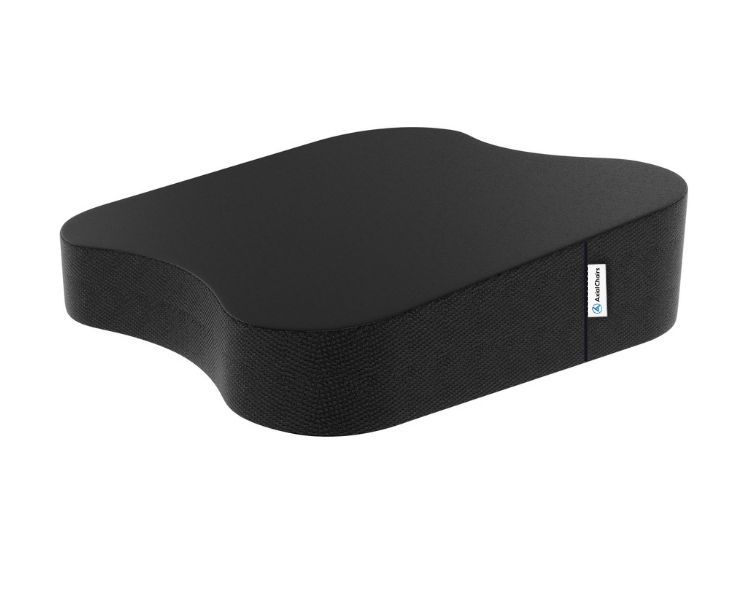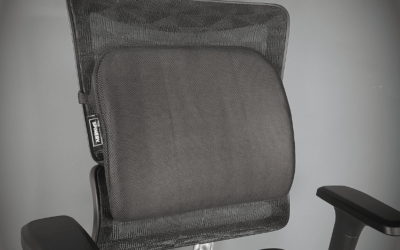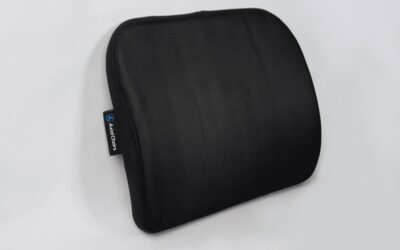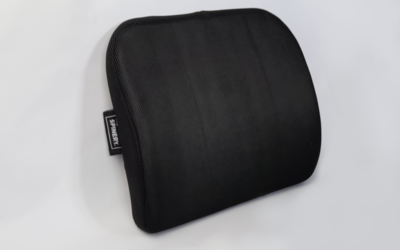If you’re dealing with sciatica pain, finding relief can be a challenge. One piece of equipment that has been gaining popularity is lumbar support – specifically designed to provide extra comfort and support while sitting. In this blog post, I’m going to answer the question “is lumbar support good for sciatica?” so that you can make informed decisions on how best to manage your sciatica pain and discomfort. Through an understanding of why some people find it beneficial and what type of lumbar supports may work best, we’ll discover if this could be a possible solution for relieving your aches and pains. Read on for details!
As a general rule, a lumbar support back brace can be an effective aid in managing sciatica pain by providing necessary compression and support. The brace can help alleviate discomfort and support the spine during activities by preventing further injury. It can promote healing and prevent exacerbation.
I have been practicing chiropractic care for almost three decades, which has granted me a deep understanding of how to enhance posture and alleviate the aches and pains that commonly come with sitting. As a certified ergonomist, I have received specialized training in this area and have authored several publications on the topic. I have been acknowledged for my expertise through multiple accomplishments, such as appearing regularly on television, writing a book about posture, and successfully funding ergonomic seat cushions through a Kickstarter campaign. Additionally, I maintain a well-liked YouTube channel where I offer valuable advice and pointers.
Is Lumbar Support Good for Sciatica?
As a chiropractor, I have worked with many patients suffering from sciatica pain. It is an incredibly painful and debilitating condition that often requires a combination of treatments to manage the symptoms. But what role does lumbar support play in treating sciatica? In this blog post, I will explore the connection between lumbar support and sciatica and explain how this type of support can help alleviate related pain.
All Day Comfort & Support
Understanding Sciatica and its Causes
Sciatica is a condition that results from compression or irritation of the sciatic nerve, which originates in the lower back and runs through the buttocks down the leg. This compression or irritation can be caused by a variety of factors such as a herniated disc, spinal stenosis, degenerative disc disease, spondylolisthesis, pregnancy (weight gain), obesity, or other injuries or illnesses. Symptoms of sciatica include pain radiating down one side of your leg as well as numbness, tingling sensations, and muscle weakness throughout the affected area.
What is Lumbar Support and How Does it Work?
Lumbar support is an important component of managing sciatica pain. It is typically provided via cushions, pillows, braces or other products designed to provide extra support to your lower back when sitting or sleeping. By providing additional cushioning for your spine and muscles in this area, lumbar support helps prevent further injury while also reducing pressure on the sciatic nerve itself.
Can Lumbar Support Be Helpful for Sciatica Pain?
Yes! Lumbar support can be very helpful in relieving sciatica-related discomfort. The extra cushioning provided by lumbar supports can help reduce inflammation in the affected area and provide relief from muscle tension in your lower back which can significantly reduce pain levels associated with sciatica. Additionally, using lumbar supports regularly may even help prevent future episodes of this type of chronic pain.
Axial Ergonomic Seat Cushion® | Seat Chair Wedge
Quick Guide: A 30-Second Summary
What Kind of Brace Should I Wear for Sciatica?
When it comes to selecting the right back brace for sciatica, it is essential to choose a brace that provides good back support while still allowing for proper spinal alignment. Lumbar support devices are useful for improving function and reducing pain associated with sciatica. Typically, I recommend braces that offer adjustable straps and support panels to fit comfortably around the lower back and pelvis area. As a chiropractor, it is important to remember that every individual’s case is unique, and the best back brace for sciatica may vary from person to person.
What Should You Not Do With Sciatica?
In my experience, it is crucial that individuals suffering from sciatica avoid activities that may exacerbate the pain. This may include heavy lifting, prolonged sitting or standing, and high-impact exercises. It is also important not to ignore the pain or avoid seeking professional help – timely intervention can help alleviate painful symptoms, including nerve pain and leg pain, and reduce the chances of chronic issues.
Does Spinal Decompression Help With Sciatica?
Spinal decompression is a treatment that aims to relieve pressure on the spinal nerves, herniated discs, or other related brain and spinal issues. It can be conducted using various techniques, from manual therapy to devices designed to stretch and decompress the spine.
Spinal decompression has shown positive results in treating sciatica pain, primarily resulting from a herniated disc or nerve root impingement. In my personal experience as a chiropractor, patients who have undergone spinal decompression therapy have reported a significant reduction in back pain and sciatica nerve pain.
Lumbar support can be beneficial for individuals suffering from sciatica. It is essential to select a back brace that offers adequate support and seek professional help in managing your symptoms. Additionally, spinal decompression therapy can serve as an effective treatment option for patients with sciatica caused by a herniated disc or nerve root impingement. Always consult a healthcare professional before starting any treatment or using products to address sciatica pain.

All Day Comfort & Support
Product Name
Axial Designs™ Seat Cushion
Price
$149
Warranty
1 Year
Type
Posture Wedge
Top Layer
100% Natural Latex (Molded)
Bottom Layer
High-Density Foam
Top Material
Isometric Grippy Vegan Leather
Bottom Material
Non-Slip Material
Side Material
3D Breathable Fabric
Exploring the Connection Between Lumbar Support and Herniated Discs
Herniated discs are one of the most common causes of sciatic nerve pain due to their ability to compress nerves located near them in the spine. As such, there is an obvious link between herniated discs and sciatic pain relief – lumbar supports can work to relieve some symptoms associated with herniated discs by providing cushioning around these sensitive areas while also improving posture overall which reduces strain on both muscles and nerves alike.
How Lumbar Support Can Alleviate Sciatic Nerve Pain
In addition to reducing inflammation caused by herniated discs or other sources of sciatic nerve pressure, using lumbar supports correctly can also lessen immediate symptoms related to increased pressure on your nerves themselves when sitting for long periods or sleeping incorrectly; doing so may actually improve circulation around compressed nerves leading to improved overall health for those suffering from long-term issues related to their spinal alignment as well as helping with more immediate problems such as leg pains resulting from incorrect posture during sleep or extended periods seated at workstations without proper ergonomic design features such as adjustable chairs etc…
The Role of Back Braces in Managing Sciatica Pain
Sciatica pain often originates from the lumbar region, or lower back, as a result of irritation or compression of the sciatic nerve. A herniated disc in the spinal column can also contribute to sciatica, as it can compress the nerve root connected to the sciatic nerve. Back braces can be helpful in managing sciatica pain by providing much-needed support to the lumbar region, which can lead to a better alignment of the spine and reduce the pressure on the sciatic nerve.
As a chiropractor, I have seen how back braces can offer immediate relief from sciatica-related pain, such as leg pain and lower back pain. However, it is essential to use a back brace as a supplemental measure rather than relying on it as a long-term solution for sciatica.
All Day Comfort & Support
Tips for Choosing the Right Lumbar Support and Back Brace
When selecting a lumbar support or back brace, it’s crucial to consider several factors to ensure you are getting the maximum benefit from the product. Here are some tips that I have found to be helpful:
Choose a back brace designed specifically for sciatica: Some back braces are tailored explicitly for sciatica support, targeting the lumbar and nerve areas affected by the condition. These specialized braces can provide better support and pain relief compared to regular braces.
Look for a brace with adjustable compression: The amount of compression provided by the brace is essential for effective relief from sciatica pain. Back braces with adjustable compression allow you to customize the level of support you need and ensure a comfortable fit.
Ensure it offers lumbar support: The purpose of a back brace for sciatica is to provide additional support to the lumbar region. Check if the brace offers sufficient lumbar support to relieve the pain and discomfort associated with sciatica.
Comfort is essential: A good back brace should be comfortable to wear when sitting, standing, or sleeping. Look for braces made with breathable and lightweight materials to ensure your comfort while wearing the brace.
Combining Lumbar Support with Other Treatments for Sciatica Pain Relief
While back braces and lumbar support can be helpful in managing sciatica pain, it is crucial to consider other treatments and approaches for a more comprehensive pain relief strategy. In my experience as a chiropractor, I have seen that the following treatments can work well in combination with lumbar support:
Chiropractic care – Regular chiropractic treatments can help to realign the spine, ensuring the sciatic nerve is not being compressed or irritated.
Physical therapy – Integrating exercises designed to stretch and strengthen the muscles surrounding the sciatic nerve can significantly reduce pain and prevent sciatica from worsening.
Massage therapy – Massage techniques focusing on the lower back and glutes can help to relieve muscle tension and pressure on the sciatic nerve.
Ice and heat therapy – Alternating between cold and hot compresses can help to manage inflammation and pain related to sciatica.
It is important to remember that sciatica is best managed with a combination of approaches, including chiropractic care, physical therapy, and other treatments. Consult a healthcare professional before trying any new treatments or products to ensure they are appropriate and safe for your specific situation and needs.
Axial Ergonomic Seat Cushion® | Seat Chair Wedge
Quick Guide: A 30-Second Summary
Summary
While many medical treatments are available to manage sciatica pain, a lumbar support back brace can be an effective form of conservative care. The compression and support the back brace provides help reduce discomfort and prevent further injury. It also enhances healing and discourages exacerbation of pain symptoms. Thus, a lumbar back brace is an efficient and cost-effective device that patients can use in combination with other treatments to gain long-term relief from sciatica pain. Ultimately, an informed choice and discussion between the doctor, patient, and family can lead to a collective decision about the type of treatment best for managing the individual’s specific sciatica symptoms.




